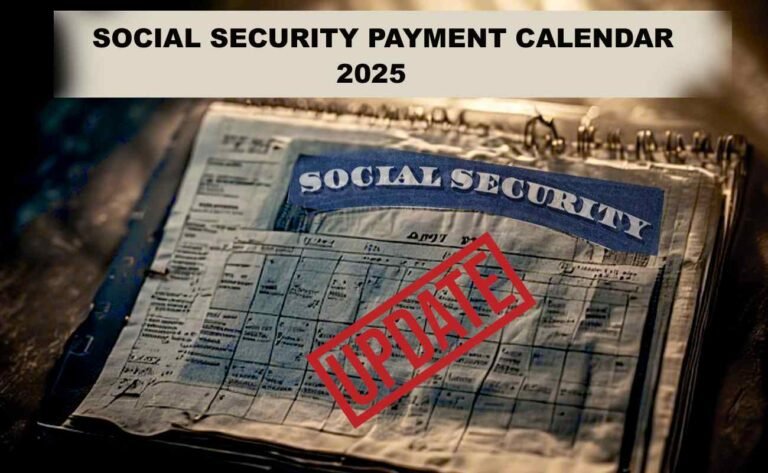USA Retirement Age Increase 2025: Your Ultimate Guide to New Social Security Rules
Starting July 1, 2025, the USA retirement age increase has reshaped how millions of Americans planned for retirement. The Full Retirement Age (FRA) for Social Security benefits is set to rise gradually, affecting those born in 1965 and later, with the FRA increasing from 67 to 68 by 1972. This change, driven by longer life expectancies and financial pressures on the Social Security system, means you may need to adjust your retirement timeline and savings strategy to secure your financial future. This comprehensive guide breaks down the new rules, eligibility criteria, financial implications, and actionable steps to help you navigate this shift with confidence.
Whether you’re nearing retirement or planning decades ahead, understanding the 2025 retirement age changes is critical. This guide provides detailed lists, tables, and expert tips to ensure you’re prepared for the updated Social Security landscape. From calculating your new FRA to optimizing your benefits, we’ve got you covered with practical, easy-to-read information tailored to the USA retirement age increase from July 2025.
Why Is the Retirement Age Increasing?
The Social Security age adjustment starting July 2025 is a response to demographic and economic realities. Americans are living longer, with many reaching their 80s and 90s, which extends the duration Social Security must pay benefits. Additionally, the Social Security trust fund faces financial strain due to a shrinking ratio of workers paying into the system compared to retirees drawing benefits. To address this, Congress initiated gradual FRA increases through the 1983 Social Security Amendments, with the latest phase kicking in on July 1, 2025. This adjustment aims to ensure the program’s sustainability without drastic benefit cuts.
The increase doesn’t mean you can’t retire early, but it does impact when you can claim your full Social Security benefits. For example, claiming benefits at age 62 could reduce your monthly payments by up to 30%, while delaying until age 70 can boost them by 8% per year. Let’s dive into the specifics of how this change affects you and what you can do to prepare.
New Full Retirement Age (FRA) Schedule for 2025
The 2025 Social Security age change introduces a gradual increase in the FRA for those born in 1965 and later. Below is a detailed breakdown of the new FRA based on your birth year:
| Birth Year | Full Retirement Age (FRA) | Effective Date for FRA |
|---|---|---|
| 1960 or earlier | 67 years | Already in effect |
| 1965 | 67 years, 2 months | July 2025 |
| 1966 | 67 years, 4 months | July 2026 |
| 1967 | 67 years, 6 months | July 2027 |
| 1968 | 67 years, 8 months | July 2028 |
| 1969 | 67 years, 10 months | July 2029 |
| 1970 | 68 years | July 2030 |
| 1971 | 68 years | July 2031 |
| 1972 and later | 68 years | July 2032 |
This table highlights the gradual shift, giving you time to adjust your retirement plans. If you were born before 1965, your FRA remains 67, unaffected by the July 2025 retirement age hike. For those born in 1965 or later, planning around the new FRA is essential to avoid reduced benefits.
Who Is Affected by the 2025 Retirement Age Increase?
Not everyone will feel the impact of the USA retirement age increase from July 2025. Here’s a clear list of who’s affected and who isn’t:
- Affected Groups:
- Individuals born in 1965 or later, who will see their FRA increase incrementally up to 68.
- Workers planning to claim Social Security benefits at or near their FRA.
- Those relying heavily on Social Security as a primary income source, as the new rules may require extended working years or adjusted savings plans.
- Unaffected Groups:
- People born before 1965, whose FRA remains 67.
- Retirees already receiving Social Security benefits before July 2025.
- Individuals claiming benefits under special provisions, such as disability or survivor benefits, which have different eligibility rules.
For example, if you’re turning 60 in 2025 (born in 1965), your FRA will be 67 years and 2 months, meaning you’ll need to wait until September 2032 to claim full benefits. This shift could catch some off guard, so it’s worth checking your status now.
Financial Implications of the Retirement Age Increase
The 2025 Social Security age adjustment has significant financial consequences, especially if you’re planning to retire early or delay benefits. Here’s a breakdown of how it affects your benefits:
- Early Retirement Penalties:
- Claiming benefits at age 62 results in a permanent reduction of up to 30% if your FRA is 67, and even more if your FRA is 68.
- For example, if your full benefit at FRA is $2,000 per month, claiming at 62 could drop it to $1,400.
- Delayed Retirement Credits:
- Waiting past your FRA increases your monthly benefit by 8% per year until age 70.
- Using the same example, delaying until 70 could boost your $2,000 benefit to $2,640 per month.
- Earnings Test for Working Retirees:
- If you work while receiving benefits before your FRA, earnings above $23,400 in 2025 will reduce your benefits by $1 for every $2 earned over the limit.
- In the year you reach FRA, the limit rises to $62,160, with $1 deducted for every $3 earned over the limit until your FRA month.
- Cost-of-Living Adjustment (COLA):
These financial considerations underscore the need for strategic planning. For instance, I once spoke with a colleague who retired at 62, only to realize his reduced benefits barely covered his expenses. He wished he’d waited a few years to maximize his payments—a lesson worth keeping in mind.
5 Key Steps to Prepare for the 2025 Retirement Age Increase
To navigate the July 2025 Social Security changes, proactive planning is essential. Here are five actionable steps to ensure you’re ready:
- Check Your FRA and Benefit Estimates:
- Visit SSA.gov to use their benefit calculator and confirm your FRA based on your birth year.
- Run estimates for claiming at different ages (62, FRA, or 70) to understand your options.
- Boost Your Retirement Savings:
- Maximize contributions to your 401(k), IRA, or Roth IRA to build a financial cushion.
- Consider catch-up contributions if you’re 50 or older (up to $7,500 extra for 401(k) plans in 2025).
- Consider Working Longer:
- Extending your career by even a year or two can increase your savings and boost your Social Security benefits.
- Part-time work or consulting post-FRA can also help without impacting benefits.
- Explore Alternative Income Sources:
- Look into pensions, annuities, or investment income to supplement Social Security.
- For example, rental properties or dividend-paying stocks can provide steady cash flow.
- Consult a Financial Planner:
- A professional can tailor a retirement strategy to your new FRA and long-term goals.
- They can also help optimize tax strategies, like managing withdrawals from retirement accounts.
These steps can make a big difference. For instance, a friend of mine started maxing out her IRA contributions in her 50s after learning about FRA changes, and it gave her peace of mind knowing she had a buffer.
Eligibility Criteria for Social Security Benefits in 2025
To qualify for Social Security retirement benefits under the new 2025 retirement age rules, you must meet specific criteria. Here’s a concise list:
- Work Credits: Earn at least 40 work credits, typically equivalent to 10 years of work.
- Residency/Citizenship: Be a U.S. citizen or legal resident with a valid Social Security number.
- Age: Be at least 62 to claim early benefits, though waiting until FRA or later maximizes payments.
- Application: File for benefits through SSA.gov or at a local Social Security office.
Meeting these requirements ensures you’re eligible, but the retirement age increase in July 2025 means timing your claim is more critical than ever.
Potential Future Changes to Retirement Age
While the July 2025 FRA increase is confirmed, there’s talk of further adjustments. Some lawmakers propose raising the FRA to 69 for those born after 1964, with a gradual rollout starting in 2026. These proposals, like those tied to Project 2025, could impact younger workers in their 30s and 40s, potentially requiring them to work until 69 for full benefits. However, such changes aren’t yet law and would need Congressional approval.
Staying informed is key. For example, checking updates on Social Security payment schedules can help you track related policy shifts.
Common Questions About the 2025 Retirement Age Increase
Here are answers to frequently asked questions about the USA retirement age increase from July 2025:
| Question | Answer |
|---|---|
| Can I still retire at 62? | Yes, but your benefits will be reduced by up to 30% depending on your FRA. |
| How does delaying benefits help? | Waiting until age 70 increases your monthly benefit by 8% per year past FRA. |
| Will the COLA offset the FRA increase? | The 2.5% COLA in 2025 adds about $49 monthly but doesn’t fully counter the FRA shift’s impact. |
| What if I work while receiving benefits? | Earnings above $23,400 (under FRA) or $62,160 (in FRA year) may reduce benefits until you reach FRA. |
| How can I check my FRA? | Use the calculator on SSA.gov for a personalized estimate. |
These answers address common concerns, but individual circumstances vary. A financial advisor can provide tailored guidance.
How to Optimize Your Social Security Benefits
Maximizing your Social Security benefits under the 2025 retirement age rules requires strategic timing and planning. Here’s a list of proven strategies:
- Delay Claiming Until Age 70:
- Gain up to 25% more than your FRA benefit by waiting, ideal for those in good health or with other income sources.
- Coordinate with Your Spouse:
- If married, consider staggered claiming strategies, like one spouse claiming early while the other delays for a higher benefit.
- Minimize Earnings Test Reductions:
- If working before FRA, keep earnings below the 2025 limits ($23,400 or $62,160) to avoid benefit reductions.
- Monitor COLA Updates:
- Stay updated on annual COLA increases to factor them into your budget. For more on 2025 benefits, check Kiplinger’s Social Security updates.
- Use SSA Tools:
- Leverage SSA.gov’s “My Social Security” account to track credits, estimate benefits, and plan your claim.
These strategies can significantly boost your retirement income, especially with the FRA increase looming.
Why Planning Now Matters
The USA retirement age increase from July 2025 isn’t just a policy update—it’s a wake-up call to reassess your financial future. Whether you’re a few years from retirement or decades away, taking action now can prevent surprises later. For example, I recently helped a family member set up a “My Social Security” account, and they were shocked to see how much their benefits could vary based on claiming age. That simple step sparked a broader conversation about their savings and work plans.
By understanding your new FRA, adjusting your savings, and exploring income options, you can build a robust retirement plan. The Social Security system is adapting to modern realities, and so should you.







